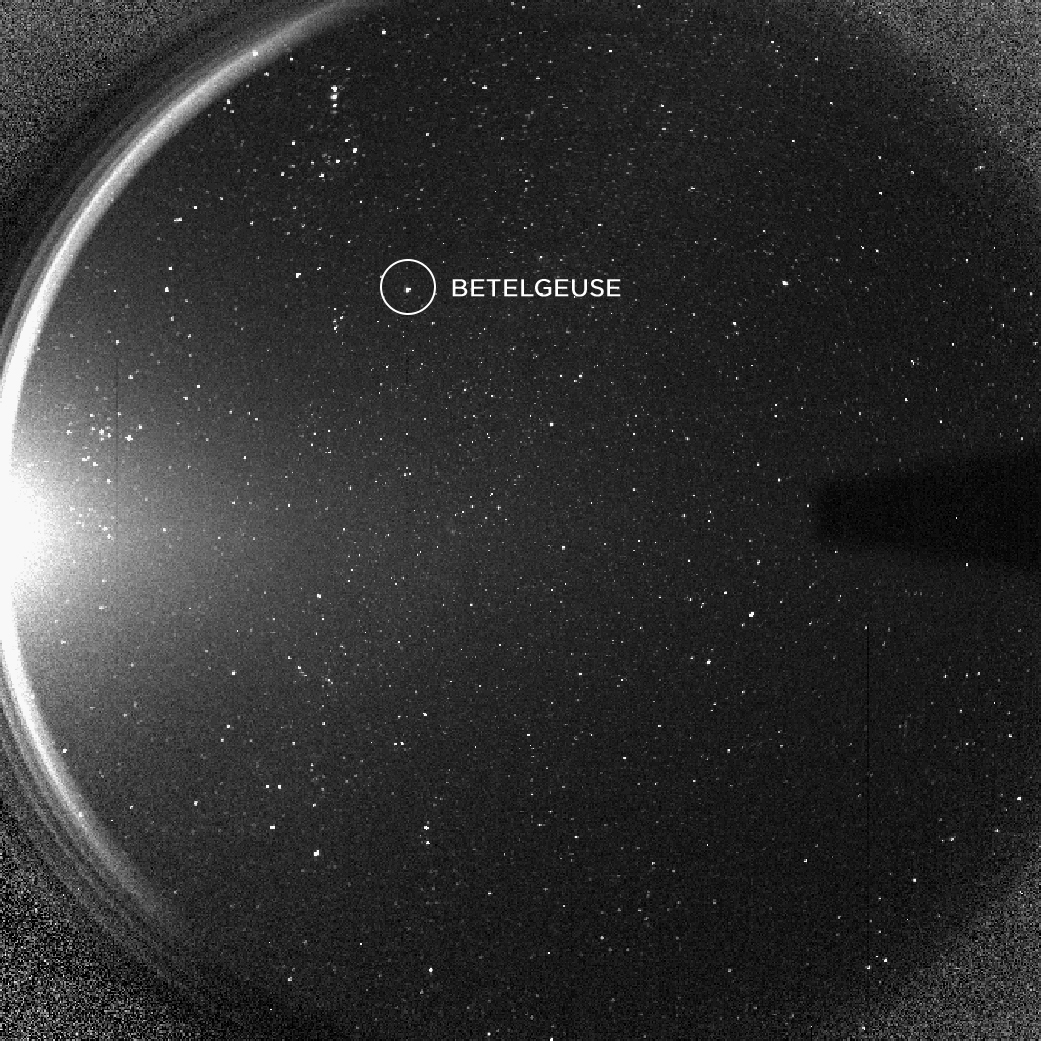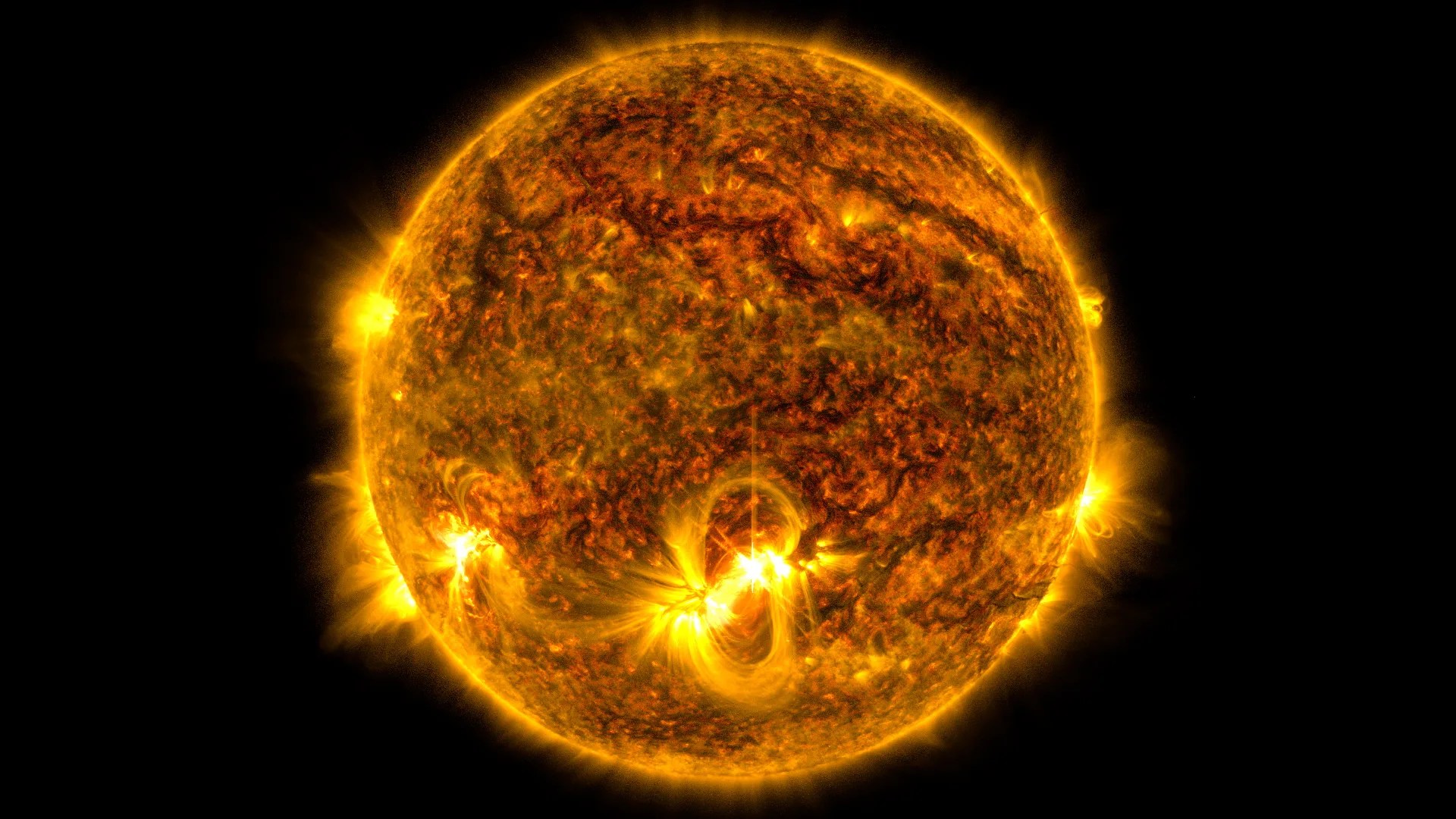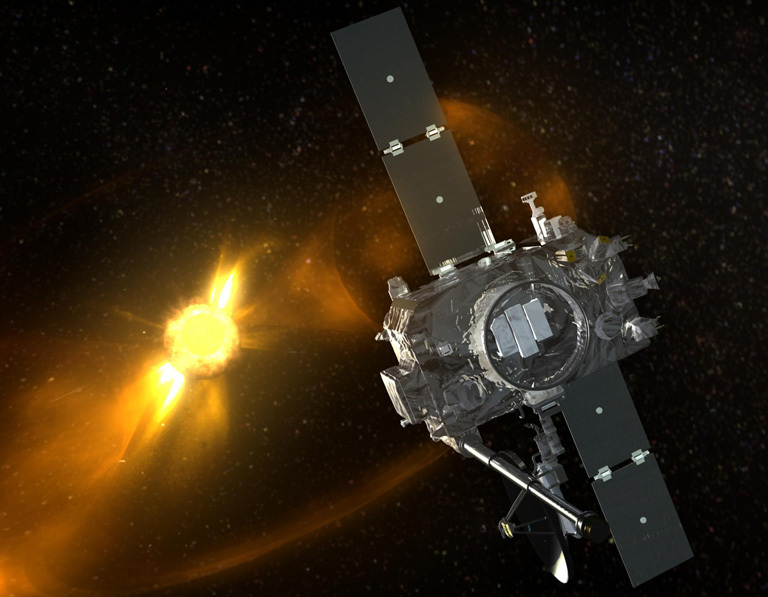For several weeks in summer 2020, NASA’s Solar and Terrestrial Relations Observatory, or STEREO, had the solar system’s best view of the star Betelgeuse, whose extreme dimming over the past several months has intrigued scientists. STEREO’s measurements revealed more unexpected dimming by the star, further adding to the questions around Betelgeuse’s recent behavior.
Starting in late spring 2020, Betelgeuse has appeared close to the Sun in the sky because of Earth’s position in space. However, the STEREO spacecraft is currently about 70 degrees away from Earth — meaning that in late June, STEREO was in approximately the same position that Earth was in around mid-April, and could therefore see the stars that appeared in Earth’s night sky during April.
Scientists took advantage of this unique orbital position to keep tabs on Betelgeuse while the star was invisible to Earth-bound observatories. During this period between late June and early August, STEREO observed Betelgeuse on five separate days, rolling the spacecraft for about two hours each time to place Betelgeuse in the field of view of STEREO’s Heliospheric Imager, an instrument usually used to capture images of the Sun’s outflowing material, the solar wind, as it passes by the spacecraft and towards Earth. The team shortened the instrument’s exposure time to account for Betelgeuse’s relative brightness compared to the solar wind. The instrument’s wide field of view covers about 70 degrees of sky, which allowed scientists to calibrate their measurements using steady stars in the night sky across several weeks.

STEREO’s measurements revealed that Betelgeuse is dimming again — an unexpected development so soon after its last dim period. Betelgeuse typically goes through brightness cycles lasting about 420 days, with the previous minimum in February 2020, meaning this dimming is happening unexpectedly early. These observations were reported by the science team via The Astronomer’s Telegram on July 28, 2020. This is an intriguing phenomenon that scientists will study with additional Earth-orbiting and ground-based observatories when Betelgeuse returns to the night sky in late August.
by Sarah Frazier
NASA’s Goddard Space Flight Center, Greenbelt, Md.
Related:































